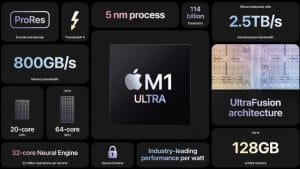Great news Australia, a new category of domain name has just launched! As of the 24th of March 2022, .au direct names can now be obtained from select auDA accredited registrars. Not sure what this means for you? Read on as we answer all your most asked questions and look at what this means for the future of Australia’s internet domains.
What is .au direct?
Also known as ‘.au namespace’, ‘second level names’ and ‘direct registration’, .au direct refers to any domain names directly before the .au (e.g. yourbusinesshere.au).
Following in the footsteps of other country code Top Level Domains including the United Kingdom (.uk), Canada (.ca), the USA (.us) and New Zealand (.nz), .au direct is an exciting development that will supplement current Australian internet domains (e.g. com.au, net.au and org.au). While shorter than names registered in these pre-existing namespaces, .au direct names will function in the same way and provide key benefits to users.
For instance, the introduction of .au direct expands the pool of available names in the Australian domain and grants users a wider range of choice. Furthermore, these shorter online names are punchier, more memorable, and easier to type on mobile displays.
Am I eligible for .au direct?
.au direct names are general use and available to anyone with a verifiable connection to Australia. Australian citizens, permanent residents and businesses registered within Australia are all eligible and can acquire .au direct names through auDA registrars.
If you’re unsure whether you or your organisation meet the requirements, head over to the definitions section of the .au Licensing Rules for a full breakdown of the eligibility criteria.
How do I register a .au direct name?
From the 24th of March 2022, all eligible individuals and businesses may license new .au direct names via an accredited auDA registrar.
.au direct is different than other Australian namespaces as it does not use selection criteria to determine which names are available to register. For example, commercial entities are reserved for com.au and net.au, not-for-profits for org.au and educational institutions for edu.au. However, a .au direct name can be anything and is not dictated by the service, good or intended purpose provided. Any name can be registered so long as it’s available, meets syntax requirements and is not already registered in another namespace.
All .au direct name purchases are subject to the prices set by the auDA registrars. While costs may differ between registrars, the wholesale price of a .au direct name is the same as that of those in other namespaces (com.au, net.au, org.au, asn.au, id.au, etc).
What about registering an existing name?
Any license holders of an existing .au domain name (e.g. yourbusinesshere.com.au) will have the first opportunity to apply for the .au direct counterpart through the Priority Allocation Process. Registrants will have between 24 March to 20 September 2022 to apply for Priority Status through a participating auDA registrar. During this time, all .au direct names with an exact match in another namespace will be placed on Priority Hold, making them unavailable to the public for the six-month period. Afterwards, they will be offered on a first come, first serve basis.
However, in some cases there may be multiple candidates eligible for Priority Status for the same .au direct name. This can happen when the same domain name has been licensed in different namespaces to different registrants. For example, Registrant 1 holds the domain license for yourbusinesshere.com.au while Registrant 2 holds the license for yourbusinesshere.net.au. In situations where this occurs, the name will be allocated according to a priority category and the creation date of each applicant’s domain name license. Relevant parties may resolve any further disputes with direct negotiation, or also have the option to file a complaint through the auDA’s .au Licensing Rules and the .au Dispute Resolution Process (auDRP). The auDA website contains further information on Priority Allocation, as well as a Priority Status Tool to help registrants better understand the processes and check whether there are any other registrants entitled to the same .au direct name.
How does .au direct affect my existing domains?
.au direct is completely optional and has no bearing on existing .au registrations. No changes will be made to domains in other namespaces, regardless of whether you (or anyone else for that matter) register them with .au direct or not. Your domains will continue to operate as normal for as long as the registration renewal remains up to date.






